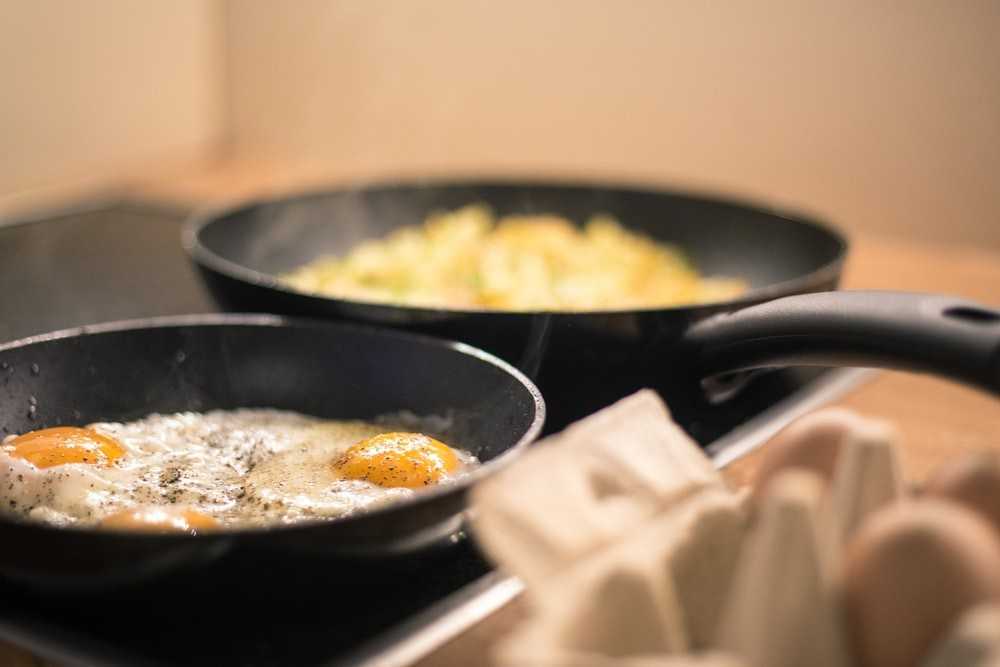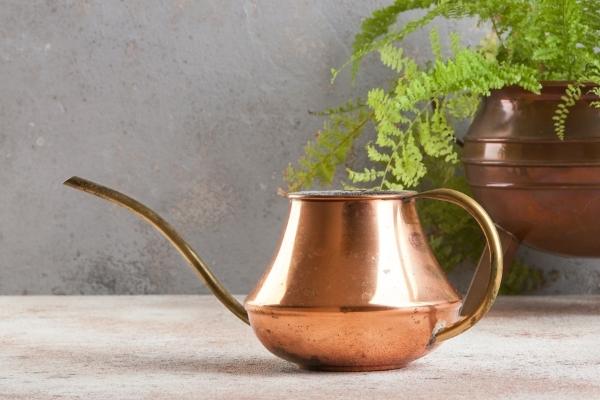People around the world have been using non-stick cookware for quite some time now, in their day to day cooking. Be it households, hotels or restaurants or any other set-up, non-stick cookware has taken the world by storm. Traditional cooking utensils have been replaced by non-stick cookware due to convenience and a lot of other advantages.

Acc. to a study, the story of Poly Tetra Fluoro Ethylene (PTFE) began on April 06, 1938, at Du Pont’s Jackson Laboratory in New Jersey, USA. Dr Roy J Plunkett, who was working with gases related to Freon fluorinated refrigerants, discovered that one sample left overnight in a cylinder had polymerized spontaneously to a white waxy solid. It was resistant to practically every known chemical or solvent; its surface was extremely slippery; almost no substance would stick to it; moisture did not cause it to swell and it did not degrade after long term exposure to sun light.
PTFE is a highly crystalline polymer (90-95%) with a melting point app. 327deg C. It has excellent properties like chemical inertness, low coefficient of friction, non-toxic, non-flammable, negligible water absorption, non-adhesive, anti-stick, high thermal stability, low dielectric constant, moderate mechanical properties and compatibility for compounding with metals and inorganic pigments.
Though PTFE (virgin) has excellent properties, it suffers from some draw-backs like; low wear resistance, low thermal conductivity, low load bearing capacity, high elongation, and low resistance to compressive deformation. Hence, different fillers are incorporated into PTFE to improve these properties.
Therefore, the simple reason it has found so much attention in the cooking scene is because the food does not stick to the pan during browning. Because of this, food can be cooked with less or no oil, and the cookware becomes easy to clean and maintain.
It is non-reactive, partly because of the strength of carbon-fluorine bonds, and so it is often used in containers and pipework for reactive and corrosive chemicals. Where used as a lubricant, PTFE reduces friction, wear, and energy consumption of machinery.
It is commonly used as a graft material in surgical interventions. It is also frequently employed as coating on catheters; this interferes with the ability of bacteria and other infectious agents to adhere to catheters and cause hospital-acquired infections.
In fact, PTFE can be used to prevent insects from climbing up surfaces painted with the material. PTFE is so slippery that insects cannot get a grip and tend to fall off.
The major application of PTFE, consuming about 50% of production, is for the insulation of wiring in aerospace and computer applications.
But there is a controversy against the coating used in these cookware, because of which they become non-stick, i.e. polytetrafluoroethylene (PTFE), commonly known as Teflon. This coating has been linked to cancers and there has been a big hue & cry to stop the use of these utensils. This entire hue and cry is because of a chemical called perfluorooctanoic acid (PFOA), which was earlier being used in non-stick cookware, but has been removed now.
PFOA, PFOS, Gen-X etc. belongs to a family of substances which come under Per- and polyfluoroalkyl substances (PFAS).
Acc. to the US EPA (United States, Environmental Protection Agency), both PFOA & PFOS are very persistent in the environment and in the human body – meaning they don’t break down and they can accumulate over time. As a result, as people get exposed to PFAS from different sources over time, the level of PFAS in their bodies may increase to the point where they suffer from adverse health effects. Most people have been exposed to PFAS. There is evidence that exposure to PFAS can lead to adverse health outcomes in humans.

Acc. to US EPA, PFAS can be found in:
- Food packaged in PFAS-containing materials, processed with equipment that used PFAS, or grown in PFAS-contaminated soil or water.
- Commercial household products, including stain- and water-repellent fabrics, non-stick products (e.g., Teflon), polishes, waxes, paints, cleaning products, and fire-fighting foams (a major source of groundwater contamination at airports and military bases where firefighting training occurs).
- Workplace, including production facilities or industries (e.g., chrome plating, electronics manufacturing or oil recovery) that use PFAS.
- Drinking water, typically localized and associated with a specific facility (e.g., manufacturer, landfill, wastewater treatment plant, firefighter training facility).
- Living organisms, including fish, animals and humans, where PFAS have the ability to build up and persist over time.
Further, PFOA and PFOS can cause reproductive and developmental, liver and kidney, and immunological effects in laboratory animals. Both chemicals have caused tumours in animals. The most consistent findings are increased cholesterol levels among exposed populations, with more limited findings related to:
- low infant birth weights,
- effects on the immune system,
- cancer (for PFOA), and
- thyroid hormone disruption (for PFOS).
Studies have shown, despite of the best practices in the manufacturing, residual PFOA is not completely removed during the fabrication process of the non-stick coating for cookware. They remain as residuals on the surface and may be off-gassed when heated at normal cooking temperatures.
On the other hand, studies, showed that the greatest portion of the chronic exposure to PFOS and PFOA is likely to result from the intake of contaminated foods, including drinking water.
Consumer products cause a minor portion of the consumer exposure to PFOS and PFOA. Of these, it is mainly impregnation sprays, treated carpets in homes, and coated food contact materials that may lead to consumer exposure to PFOS and PFOA.
Children tend to experience higher total uptake doses (on a body weight basis) than teenagers and adults because of higher relative uptake via food consumption and hand-to-mouth transfer of chemical from treated carpets and ingestion of dust. This meant that cookware is not a major source of PFOS or PFOA exposure.
- A 2009 study, examined whether exposure to these compounds may decrease fecundity in humans. Fecundity is the physiological maximum potential reproductive output of an individual (usually female) over its lifetime. Plasma levels of PFOS and PFOA were measured at weeks 4-14 of pregnancy among 1240 Danish women. The findings suggested that PFOA and PFOS exposure at plasma levels seen in the general population may reduce fecundity.

- A 2008 study, assessed 1400 pregnant women and found that, maternal PFOA levels in early pregnancy were associated with smaller abdominal circumference and birth length. For each ng/ml increase in PFOA, birth length decreased by 0.069cm and abdominal circumference decreased by 0.059cm.
- A 2015 systematic review study, found that, higher PFOS and PFOA concentrations were associated with decreased average birth weight in most studies, but only some results were statistically significant.
- A 2010 study, found that, higher concentrations of serum PFOA and PFOS are associated with current thyroid disease in the U.S. general adult population.
- A 2017 study, found that, an accumulation of PFOS and PFOA was documented in thyroid cells, and a cytotoxic effect was observed after exposure to extremely high concentrations of these compounds.
In environmentally exposed communities and in the general population, the most consistent effect of exposure to PFOA, and to a less extent to PFOS, is the occurrence of hypothyroidism. Women and children appear to be more at risk of developing mild thyroid failure. Pregnant women with circulating thyroid antibodies might be at risk of developing subclinical hypothyroidism, mainly when exposed at high doses of PFOS.
- A 2013 study, investigated whether PFOA and PFOS exposures are associated with prevalence of osteoarthritis, and whether associations differ between men and women. They found that, higher concentrations of serum PFOA were associated with higher odds of osteoarthritis in women, but not men.
- Another study, found that the relation between PFOA and OA was significantly stronger in younger adults.
- A 2012 study, examined the association between serum PFOA and PFOS concentrations with markers of liver function in over 47,000 adults. The results showed a positive association between PFOA and PFOS concentrations and serum ALT level, a marker of hepatocellular damage.
- A 2011 study, examined the relation of serum PFCs and chronic kidney disease in 4,587 adult participants (51.1% women). Researchers found that serum levels of PFCs, including perfluorooctanoic acid and perfluorooctane sulfonate, were positively associated with Chronic kidney disease.
- A 2018 review study, found that, neurological and immunological disorders are the most concerning potential health outcomes resulting from exposure to diverse environmental toxicants including PFCs. Studies provide evidence for positive associations between PFC levels and the incidence of attention deficit hyperactivity disorder and reduced immune response to vaccination both in children and adults.

- A 2014 study, found that, found that even low level exposure to PFOA and PFOS was positively associated with high total cholesterol and LDL in children.
- A 2013 study, examined cancer incidence in Ohio Valley residents exposed to PFOA in drinking water due to chemical plant emissions. Researchers found that, cumulative serum PFOA concentrations were positively associated with kidney and testicular cancer.
- Though some studies, do not support the relation between PFOS & PFOA exposure and cancers in humans.
- In a 2013 study, researchers studied autoimmune diseases in relation to level of exposure to perfluorooctanoic acid (PFOA) in 32,254 US adults with high serum PFOA serum levels associated with drinking contaminated water near a chemical plant, and found that the incidence of ulcerative colitis was significantly increased in association with PFOA exposure.
Because of the above evidences and many others, in 2006, the US EPA and the 8 US manufacturers who used PFOA at the time agreed to a “stewardship program.” The goal was for the companies to eliminate PFOA from emissions and product contents by the end of 2015. PFOA and some closely related chemicals (such as PFOS) are now no longer made in the US, although they are still made in some other countries and could potentially reach US consumers in certain types of products. That’s why all Teflon products in US, since 2013 have been PFOA free.
Another problem with the Teflon coating on the non-stick cookware is that at temperatures above 300deg C, this coating starts to break down, releasing toxic chemicals into the air. This leads to a sort of fever termed as “metal fume fever” or “polymer fume fever.
Studies found that, metal fume fever typically presents with generally non-specific complaints including influenza-like symptoms, fever, shaking chills, myalgias, headache, and malaise. Onset of symptoms typically occurs 4-10h following the exposure to metal-containing fumes.
However, metal fume fever is typically a benign and self-limited disease entity that resolves over 12-48h following cessation of exposure. However, in few cases it can be quite serious and cause severe toxic effects such as pulmonary oedema, pneumonitis, and death in the exposed individuals.
WHAT SHOULD WE DO NOW?
We need to understand that it’s very difficult to prove any such controversy, because of millions involved in profits. The companies will fight tooth & nail to protect their inventions and if needed take out alternatives, just so that they can stay on the top of the market and the profits remain intact.

Despite of the fact that most manufacturers in US have phased out the use of PFOAs in cookware, and the fact that non-stick pans have not been shown to be the main source of these chemicals, the controversy still exists. Newer alternatives are coming in the market promising safer alternative for non-stick cooking, but most of them have not been tested or studied for long term safety.
Now there are two options with all of us:
- We continue using the non-stick cookware but keep the following precautions in mind:
- Don’t preheat an empty pan: Empty pans can reach high temperatures within minutes, potentially causing the release of polymer fumes. Make sure you have some food or liquid in pots and pans before you preheat.
- Avoid cooking on high heat: Cook on medium or low heat and avoid broiling, since this cooking technique requires temperatures above those recommended for non-stick cookware. This is generally not possible in Indian cooking, as most cooking is high-heat cooking.
- Ventilate your kitchen: When you’re cooking, turn on your exhaust fan or open up windows to help clear any fumes.
- Use wooden, silicone or plastic utensils: Metal utensils can lead to scuffs and scratches on the non-stick surface, reducing the life of your cookware.
- Wash the Cookware Gently: Gently wash pots and pans with a sponge and soapy, warm water. Avoid using steel wool or scouring pads, since they can scratch the surface.
- Replace old cookware: When Teflon coatings start to visibly deteriorate with excessive scratches, peeling, flaking and chipping, they are ready to be replaced
- Check the Label: check the label of the non-stick cookware you are purchasing. It should mention “PFAS/PFOS/PFOA Free”. Again, this is very difficult in India, as unlike US, the regulations here are virtually non-existent or can be easily flouted.
But if you ask my advice, then keeping all the above research studies, looking at the country we are staying in, and the way we cook our foods, I would suggest you to minimize the use of non-stick cookware.
Now, for most people this is not entirely possible in one go, as it is financially not viable for a lot of families. But slowly, one utensil at a time, start replacing the cooking utensils with the other safer options. Till that time, follow the above guidelines of cooking in non-stick cookware.



